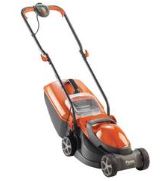If you need some help with tall or long grass in your garden, then make sure to take a quick look through the videos outlined below which will show you show to tackle this particular job.
Grass Varieties
Garden grass varieties and pasture grass varieties differ in their characteristics and intended purposes. Garden grasses are primarily selected for their aesthetic appeal, while pasture grasses are chosen for their durability and nutritional value for livestock and here are some key points to be aware of about each
View also: Popular Cordless Lawnmowers
Tall Grass Mowing Video Tips
Video - How to Cut Tall Grass with Basic Lawn Mower
Garden Grass Varieties
1, Aesthetic Appeal - Garden grass varieties are selected for their lush, green appearance and soft texture, creating a visually appealing and comfortable surface for recreational use.
2, Low Growth Habit - These grasses are often chosen for their ability to maintain a short and uniform height, requiring frequent mowing to achieve the desired look.
3, Non-Invasive - Garden grasses are typically non-invasive, meaning they do not aggressively spread and invade other areas of the garden or neighbouring landscapes.
4, Sun and Shade Tolerance - Various garden grass varieties are available, some of which are better suited to full sun, while others can tolerate shade to a certain extent.
5, Limited Foot Traffic Tolerance - While garden grasses can handle moderate foot traffic, they are generally not as resilient as pasture grasses and may suffer damage under heavy use.
Pasture Grass Varieties
1, Durability and Resilience - Pasture grass varieties are bred for their ability to withstand heavy grazing, trampling, and harsh environmental conditions.
2, Nutritional Value - These grasses are selected for their high nutritional content, providing essential nutrients for grazing livestock.
3, Fast Growth - Pasture grasses often have rapid growth rates to ensure a steady food supply for livestock and to quickly recover from grazing.
4, Soil Erosion Control - Many pasture grasses have extensive root systems that help prevent soil erosion, especially in areas prone to runoff.
5, Adaptability - Pasture grasses are available in different varieties that are suitable for various climates, soil types, and specific livestock needs.
View also: Popular Robotic Lawnmowers
Video – Mowing Super Tall Grass
Additional Factors
It's important to note that some grass varieties can be used in both garden and pasture settings, depending on the specific requirements and preferences of the landowner. Additionally, factors such as climate, soil conditions, maintenance practices, and intended use should be considered when selecting the appropriate grass variety for any particular application.
Garden Grass Varieties
Several popular grass types are commonly used in gardens for their aesthetic appeal, lush appearance, and ability to create a vibrant and inviting landscape
Kentucky Bluegrass (Poa pratensis)
Known for its dense, dark green blades, Kentucky Bluegrass is a popular choice for residential lawns. It has good cold tolerance and creates a lush, uniform appearance. However, it requires regular watering and maintenance, including frequent mowing and fertilization.
Bermuda Grass (Cynodon dactylon)
Bermuda Grass is a warm-season grass that thrives in hot climates. It has a fine texture and excellent heat and drought tolerance, making it suitable for regions with long, hot summers. Bermuda Grass establishes quickly and recovers well from foot traffic and minor damage. It requires full sun and regular maintenance.
Zoysia Grass (Zoysia spp.)
Zoysia Grass is a warm-season grass known for its excellent durability and ability to withstand heavy foot traffic. It forms a dense, carpet-like turf with medium to fine texture and has good heat and drought tolerance. Zoysia Grass requires moderate maintenance and thrives in areas with warm summers.
Fescue Grass (Festuca spp.)
Fescue Grass is a cool-season grass that is often used in regions with mild climates. It is known for its shade tolerance and ability to maintain its green colour year-round. Fescue Grass requires less water than some other grass types and has a coarse texture. Varieties such as Tall Fescue and Fine Fescue are commonly used in gardens.
Ryegrass (Lolium spp.)
Ryegrass is a cool-season grass that is frequently used for overseeding warm-season lawns during the winter months. It germinates quickly and provides a temporary green cover when warm-season grasses go dormant. Ryegrass has a fine to medium texture and requires regular watering and mowing.
Local Experts
These grass types represent a few examples of popular choices for garden lawns. However, the best grass variety for a specific garden will depend on factors such as climate, soil conditions, desired maintenance level, and the intended use of the lawn. It's recommended to consult with local experts or garden centres to determine the most suitable grass type for your specific location.
View also: Popular Cordless Hedge Trimmers
Mowing Tall Grasses
Cutting tall grass using a lawnmower requires some specific techniques to ensure effective and safe mowing so here's a step-by-step guide on how to cut tall grass with a lawnmower that you can use and adjust where necessary
1, Prepare the area - Before mowing, remove any debris, rocks, or branches from the lawn to prevent damage to the lawnmower and ensure a smooth mowing process.
2, Adjust the lawnmower - Set the cutting height of your lawnmower to its highest setting. This allows you to gradually reduce the grass height and avoid putting excessive strain on the mower's engine and blades.
3, Start with a higher cut - If the grass is excessively tall, it's advisable to start by cutting only a portion of its height initially. This prevents overloading the mower and ensures a more efficient cutting process.
4, Mow in multiple passes - To effectively cut tall grass, mow the lawn in multiple passes, gradually lowering the cutting height with each pass. For very tall grass, it may be necessary to make several mowing sessions over a period of time to achieve the desired height.
5, Slow and steady - Mow at a slower pace than usual to give the mower's blades sufficient time to cut through the tall grass. Avoid rushing or making quick turns, as this can lead to uneven cuts or clogging of the mower deck.
6, Avoid cutting too low - When the grass reaches a reasonable height, avoid cutting it too short at once. Removing only one-third of the grass height in a single mowing session helps maintain the health and vigour of the grass.
7, Clear clippings if necessary - If the tall grass has resulted in heavy clippings or clumps on the lawn, consider raking or using a bag attachment on the lawnmower to collect and remove the excess debris.
8, Regular maintenance - After mowing tall grass, it's important to clean the lawnmower thoroughly. Remove any grass clippings or debris from the mower deck, sharpen the blades if necessary, and perform routine maintenance tasks as recommended by the manufacturer.
Area Inspection
Remember, safety is paramount when mowing tall grass. Wear appropriate protective gear, such as sturdy shoes, long pants, and safety glasses. Additionally, inspect the area for hidden objects or obstacles before mowing to prevent damage to the lawnmower or injury to yourself or others. By following these steps, you can effectively cut tall grass using a lawnmower and maintain a well-manicured lawn.
View also: Popular Weed killers here
Community Feedback
Have you any tips yourself when it comes to mowing Tall Grasses? If so, please educate the wider community by leaving a comment in the comment box section provided below – so that others can learn also…



Recent Comments